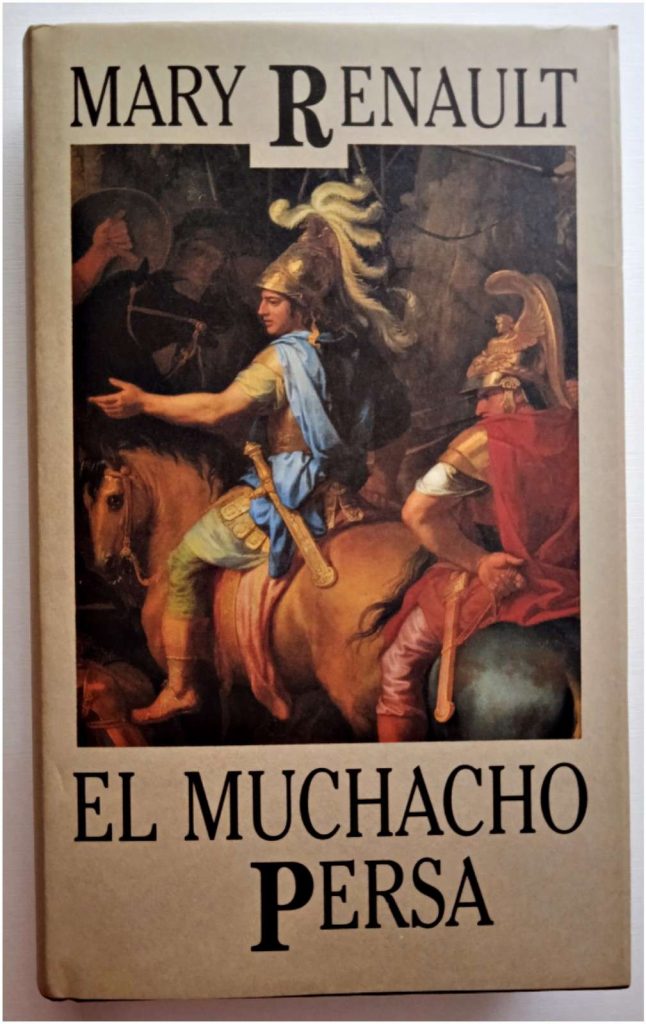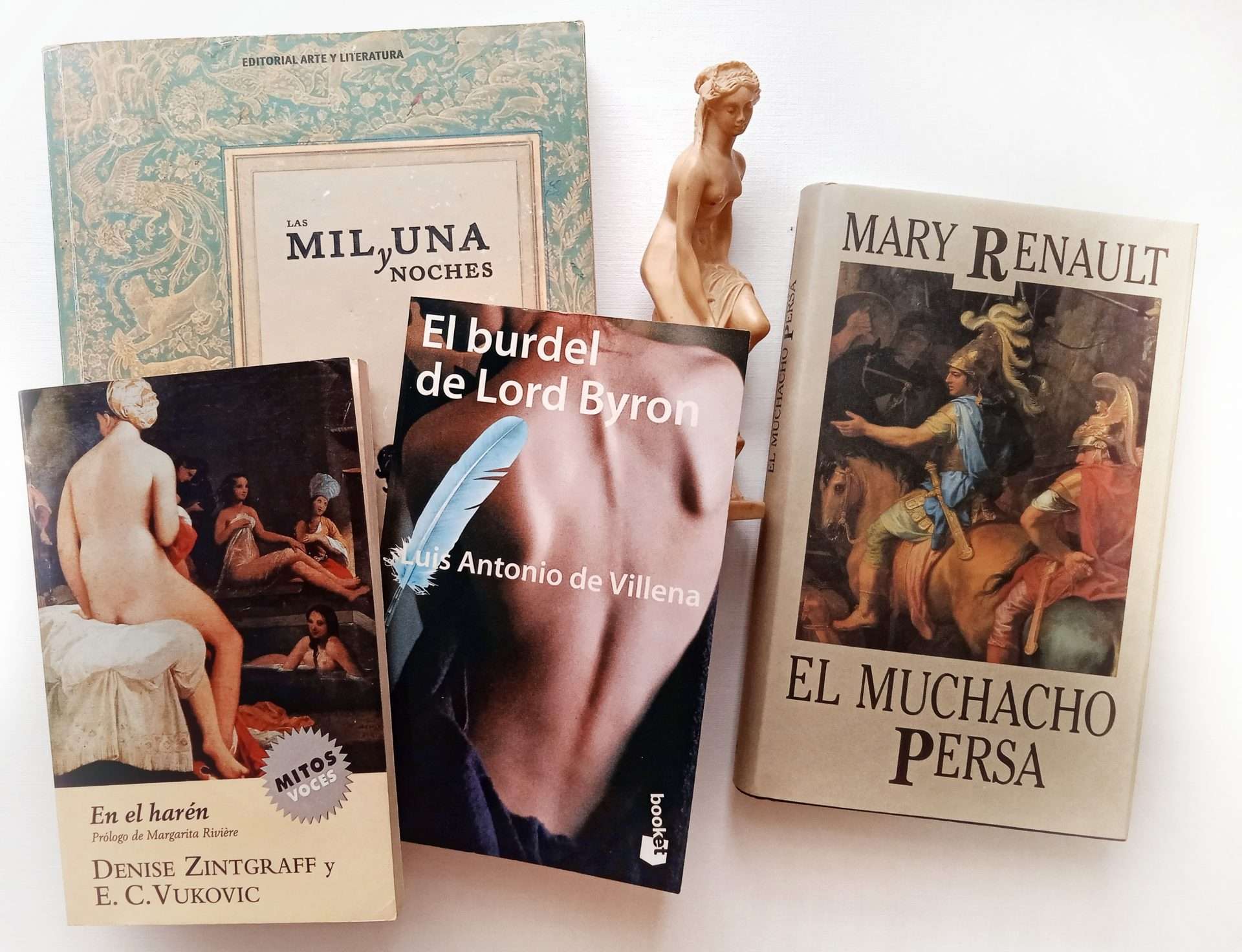There have been many times in which the space of the harem has been romanticized in its representations, literary or not. In truth, it is a place where women are locked up for their use in domestic and sexual work, basically, under a supposed cloak of protection. The word has been adding meanings over the centuries, and today there are those who call it a harem even a “modest” list of three or four friends who meet to please each other. But those of us who have an idea of how things were in ancient Persia, and at the time when Muslim societies were conquering the Mediterranean, the Middle East, India and Africa, know that when they spoke of a harem it was something serious and much more closed.
The word, as we use it today, comes from the term of Arabic origin harim, and its translation is something like: sacred place for the women of the family; Put that way, it sounds like a euphemism, almost like sisterhood… But, no.
A harem could have up to a thousand people, and I say people because eunuchs also lived in it who acted as assistants, entertainers and sexual company if necessary —we know that the sexuality of Arab and Persian males could be as flexible as that of the Japanese ninjas, nothing, that the morbidity towards the androgynous and the trans presence have always been present in all times of the Humanity, don’t tell you anything else. There were also the children of the women with their patriarchs and, sadly, some slaves; those were in the last link of the chain of use.
I took this note from the questions that Google offers, with answers included, I reproduce as is:
“According to him Jatakathe collection of legendary tales about the previous lives of the Buddha, the harem of King Tamba of Benares has been the largest harem in history, as it consisted of more than 16,000 women”, and here is one who knew how to ride it to his heart’s content. I haven’t looked up anything about him, but I’m sure he’s as mythologized as Alexander the Great, who is painted everywhere as a super sexual macho, and I wonder, did the guy really have that much energy to go out and fight for then get drunk and still have blood to embed women, men and eunuchs alike? Oh! I want what he drank. Anyway, so as not to mislead myself, let’s go back…
The harem has been an inspiration for art, and its entry into the popular imagination has been thanks to painting, literature, cinema, television and video clips. Do you want a more famous harem than that of Arabian Nights? Of course, the one in this literary classic is owned by a sultan who is a bit of a son of a his mother, since Shahriar, after discovering that his first wife was cheating on him, decided, in absurd revenge, to marry a different woman from the kingdom every night and behead her the next day, until Scheherazade arrived. and ordered to stop with her beauty, her vast culture, and her tales to entertain the damned, she basically (sur)lived on the tale. Shahriar’s Harem was the entire kingdom, it is clear…
The sad thing about all this is that harem species still exist in rural areas of countries like Afghanistan and in the Persian Gulf. In them they lock up the women, who come to belong to a patriarch, and are used for domestic and sexual purposes, nothing comparable to the beautiful images that Renaissance painting has left us of what its exponents imagined as a harem.
Today I want to share with you, after this long introduction, three novels in the harem, Arabian Nights besides. And I have selected only three, because of the sixteen titles that I know of and that refer to the harem, between the romantic, the police and the mystery —almost all good pulp— it was these that I found with the type of literary quality that I was looking for. eye! I do not accuse literature pulpexcept that my interest was more focused on the realistic, on the investigative, no matter how much fiction always leaks in these cases.
Without more:
“In the harem”, by Denisse Zintgraff and EC Vukovic
If Scheherazade spent a thousand and one nights telling stories to survive, in the case of Denisse Zintgraff it was 730 nights, as she spent two years living in a harem in Saudi Arabia, as a guest of a Saudi princess, so that she could teach her son French.
Denisse is Swiss, and lived in New York at the age of thirty; she in that city she carried a magazine underground in the mid eighties. sick of life kitschan imitator of the plastic standards imposed by magazines and the society in which she lived, decided to embark on this adventure under a work contract, without knowing that she would end up leaving us a kind of fictionalized report of her experience in a modern harem, full of luxuries. and unusual relationships.
The truth is that the book offers an image that sheds light on several issues that are still mysterious to our Western mind, even after reading it, one still does not fully understand it, because, in the end, we have the testimony of a woman who lived with other women in a space that we thought was a thing of the past, or a legend. It should be contrasted with the masculine version and the laws that support it, since it is a way of understanding life that is very foreign to ours.
We will find the classics of the case: punished for talking to other men, without basic liberties, subjected and, at the same time, “compensated” with certain comforts, delicacies and luxuries – I put in quotes the adjective compensated, and forgive me for not finding another more similar, well It is a reality that escapes my understanding, it makes me feel, as the author clarifies in the opening note of the book, that: “(…) Any misinterpretation of how much I have seen and lived must be attributed solely to my ignorance…”.
Written simply, it is not a typical novel, but rather a kind of novelized report, —as I already said—, which seeks to provide knowledge about the hermetic Saudi culture, of which we often see luxury and money, although we know what they hide their affairs.
The modern harem can be compared to a convent, perhaps, but with hedonistic touches and more practice of Christian sin than one imagines. It also explores the ins and outs of the links that are created between women who share a condition, and presents it in a respectful way, leaving the most general conclusions to the reader and his worldview. Here is a life experience, a description that seeks, above all, to delve into what is human and, also, into our own cultural errors:
“No culture is totally white or totally black, neither the Christian nor the Muslim. Accepting this fact means moving forward on the path of peace.”
“Lord Byron’s brothel”, by Luis Antonio de Villena
Awarded the Azorín Novel Prize in 1995, this work of fiction uses biographical information about the famous and controversial writer to offer us an entertaining and very well written story.
Villena makes use of various voices and narrative techniques, with jumps and silent, epistolary, voices in the past and present, second-person narration, and everything so well woven that it is impossible not to admire her.

We are facing a novel with adult language. Luis Antonio is not cut off with explicit, sensual and sexual language, obscene and very in tune, since the story has Lily among its narrators, a fictitious prostitute who was supposedly Lord Byron’s lover, some kind of favorite to whom he sent letters very honest and inspired:
“Lily, little panther:
Have you already thought about the love of women? It’s not my style to give up anything. I love boys, and women can throw me into a state of despair, fire, and desire…”
Here is a fragment of the accurate synopsis of the book, to give you an idea:
“Jonathan Decambra, inspector of Scotland Yard, in his continuous routine visits to a London brothel, met Lily, an old prostitute with whom he ended up establishing a tender friendship based on long talks about past glories. Thus, Lily, who in her youth had an intoxicating beauty, revealed to the police her premature and passionate relationship with Lord Byron (…) Revealing before Jonathan the unease that overwhelmed her life and Byron’s verses, his innumerable love affairs – hence that of the Harem—and failures of a restless existence, the contradictions of a tormented spirit that was rejected by his own and who died fighting for the freedom of others.”
Luis Antonio de Villena is a poet, and it is fortunately impossible for him not to have lyrical flights in his prose. This book is a work of literary art, and although it has tweaks and fictional liberties, it becomes completely truthful, another of its merits, and reveals to us that already mythical character who was Lord Byron even in life. The other merit of this work is that, despite having so many combined techniques, it is a pleasant, simple, entertaining and very passionate read. I in particular greatly admire the author and recommend this novel in the hope of expanding the network of admirers of his work.
“—(…) He is my youth. Or rather, youth is still him, could you ask for a better fate?
“Do you think that’s Byron’s secret to success?”
“Keep acting like a sorcerer of youth.” He is a picture of adolescence. A song of beauty, defiance and death. Adolescence and youth ardently ask for such things…”.
“The Persian Boy” by Mary Renault
With this biographical novel I make a special, because in this particular work not everything happens in a harem, brothel or similar area, but it does start from that context to introduce us to Bagoas, the eunuch who was Alexander the Great’s lover. It also seems appropriate to present the novel, since it is the story of one of the feminized but not completely feminine figures that made up the classic harems of ancient Persia.
The novel tells us how, despite the fact that Bagoas came from a noble family, he ended up being a eunuch and serving the women of the harem that would later fall into the hands of the conqueror Alexander the Great, of whom Renault paints a very human portrait, through the vision of Bagoas, his eromenos Favourite.

This novel is the second in a series, the result of an investigation into the life of Alexander the Great that begins with fire in paradise in which he covers the beginnings of the life and work of this historical figure, and continues with the persian boy, to talk about their “scandalous” side, that is, their personal and sexual relationships. To give you an idea of the proximity and historical importance of Bagoas, here is this short snippet:
“(…) Although I was young and slender with the muscles of a dancer, I began to notice that my strength was failing with each passing night (…) There were some nights when I only wanted to lie down forever (…) Now the marches were longer and we slowed down. But he continued to lead them at night and in the heat of the morning. At bedtime we hardly spoke. We had come to the agreement that he didn’t have to get tired talking to me. Sometimes I had to force myself to keep it from lying down as it was; he cursed me and I snapped back at him, like a nursemaid who has gotten angry with a child. But it was nothing, it served as a distraction after so many hours of hiding before the men. When he had washed it, he thanked me…”.
This is a great historical novel, like few others, very necessary in these times, ahead of its time and perhaps for this reason it was even censored in some countries. People say that Behind every great man is a great womanbut also great trans, and here is an example.
We read next week. For this, I have already distributed enough “Librazos”.


















